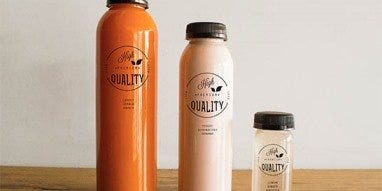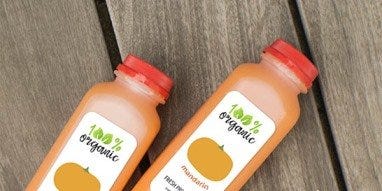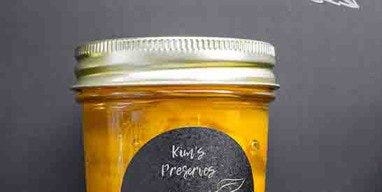All About Plastic
Article By : Jonathan @ BottleStore
Plastics, once hailed as an industry-changer, have become an integral aspect of modern life. Many household items contain plastic, such as television sets and cookware. Industries use plastic in the manufacturing of numerous items, including computers, pens, phones, automobiles, aircraft, and more. While this has helped increase everyday convenience, it has also had a negative impact in many ways. It is most commonly found in food packaging, which can cause a large amount of waste. In fact, consumers waste approximately 100 million tons of plastic annually around the world. According to many environmentalists, plastic may take between 500 and 1,000 years to decompose in landfills. This destroys entire ecosystems, which directly impacts the planet and its inhabitants. Recycling can help reduce this impact if consumers work with the industry to curtail unnecessary waste. While plastic has its pros and cons, it has definitely revolutionized the world.
Manufacturers create plastic from oil, a carbon-rich raw material, which makes it a large carbon-containing compound. Plastics consist of big molecules called polymers. Polymers are composed of repeating units of smaller compounds called monomers. In order to create a variety of plastics, chemists combine numerous monomers in many different arrangements. Most plastics will not chemically react with other substances, such as alcohol, soap, water, acid, or gasoline. They can also be molded into a variety of shapes. This makes plastic the perfect material for creating storage containers, toys, cups, bottles, utensils, automobile parts, and even candy. For this reason, plastics have revolutionized industrial manufacturing.
Before the creation of plastic, the only substances used to mold different items were clays and glass. People used hardened clay and glass to create storage containers, but a clay or glass bottle had a tendency to break easily. Some people used natural substances, such as tree gums and rubber, for storage containers. Unfortunately, rubber loses its shape and becomes sticky when heated. It was not until 1839, when Charles Goodyear discovered a process known as vulcanization, that things started to change. He observed the reaction of sulfur with crude rubber, which created the first rubber compound that became resilient upon cooling. This rubber compound also retained its shape when heated. His discovery made rubber more durable. In 1846, Charles Schnonbein discovered another polymer when he poured a nitric acid sulfuric mixture onto cotton. This created nitrocellulose, a polymer that could burst into a smokeless flame. The military used it in place of gunpowder. In 1870, John Hyatt experimented with nitrocellulose by reacting it with camphor. This created celluloid, a plastic polymer commonly found in photographic film, dental plates, ping-pong balls, and billiard balls.
In 1909, Leo Baekeland created Bakelite from a mixture of phenol and formaldehyde. The condensation reaction between both monomers allowed the formaldehyde to bind to the phenol rings to create strong, three-dimensional polymers. Bakelite could be molded when heated and solidified to create a hard plastic. Bakelite was used in the creation of handles, phones, auto parts, jewelry, cookware, and furniture. Bakelite is heat-resistant and tamper-proof, which means it could not be easily melted or scorched once cooled. The creation of Bakelite led to a whole class of plastics known as phenolic resins. In the 1930s, Wallace Carruthers invented nylon from the condensation reaction between adipic acid and a certain type of diaminohexane monomer. Nylon is lightweight and durable, which made it the perfect polymer for many types of items, including clothing, tents, luggage, and ropes. These early polymers became widespread and led to the invention of many other plastics, such as polystyrene, polyethylene, and vinyl.
There are two types of plastics in existence: theromset plastics and thermoplastics. Thermoset plastics hold their shape and cannot revert back to their original form once cooled and hardened. Thermoset plastics are hard and durable, making them good for automobile parts, aircraft parts, and tires. Some different types of thermoset plastics include polyurethanes, epoxy resins, phenolic resins, and polyesters. Thermoplastics are more malleable than thermosets. Thermoplastics can soften once heated and return to their original form. Thermoplastics can be easily molded and created into films, fibers, and packaging. Some examples of thermoplastics include polyethylene, polyvinyl chloride, and polypropylene.
The majority of oil-based polymers will not decompose for hundreds of years. As a result, many people have fought the pollution caused by plastics by recycling. Each type of plastic has a code that indicates whether or not it can be recycled. Some municipalities will not accept certain types of plastics because they are not economically feasible to recycle. Once the plastic objects are collected, a recycling facility will inspect and weed out contaminants before shredding and washing the plastic. After separating and drying the plastic, the recycling facility will melt, drain, cool, and then sell the plastic for industrial uses. Recycling enables us to preserve our landfills and save ecosystems damaged by pollution. People can take part in recycling at home as well as reusing plastic bottles whenever they can.









